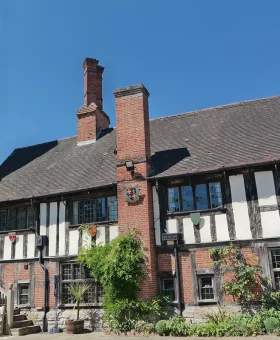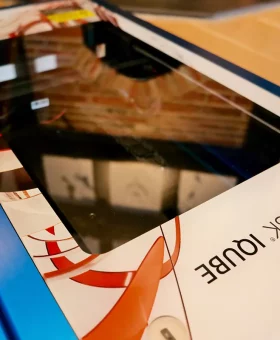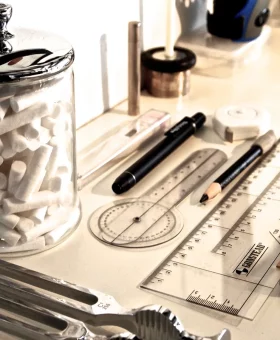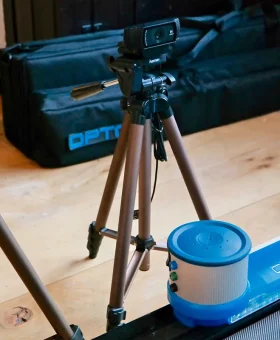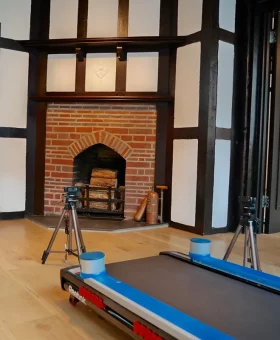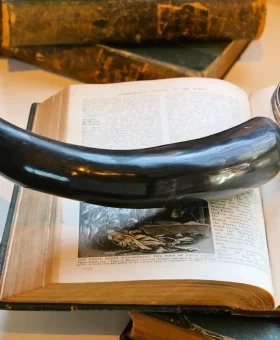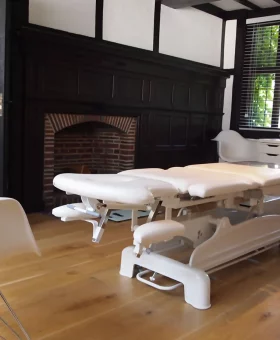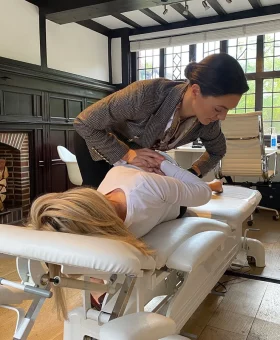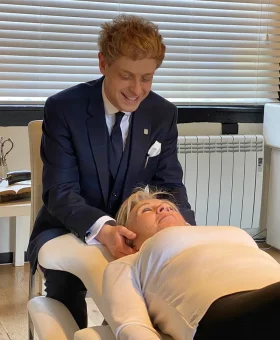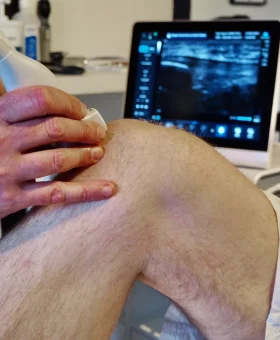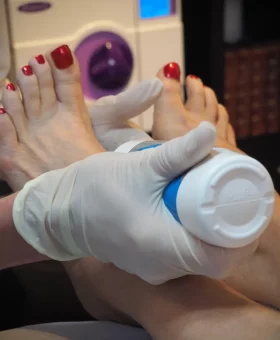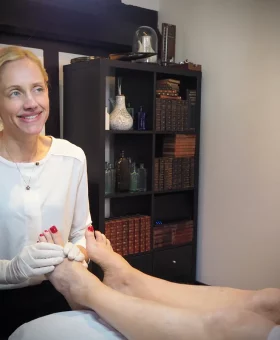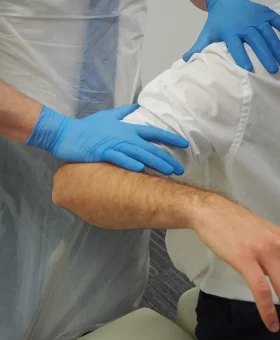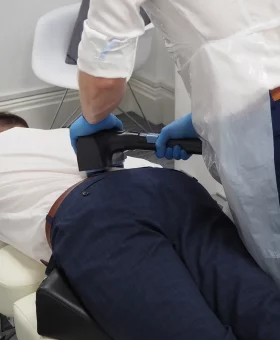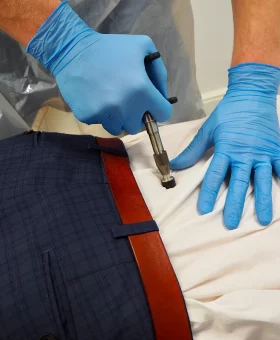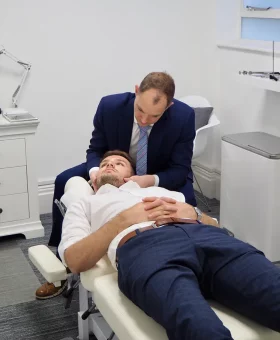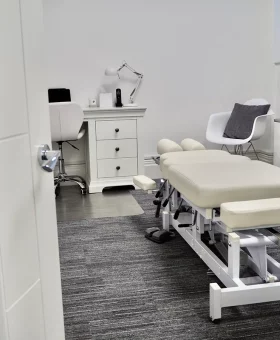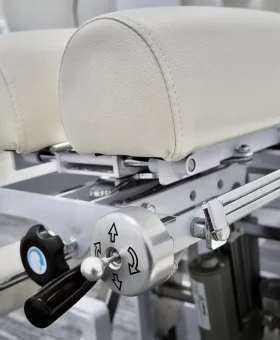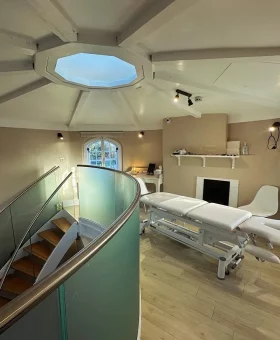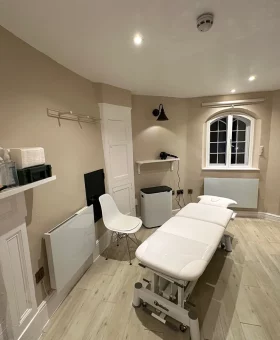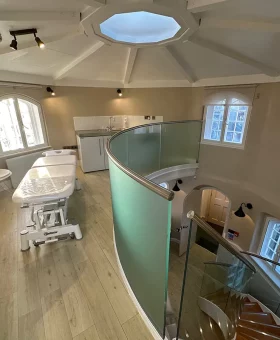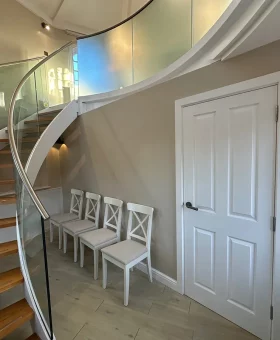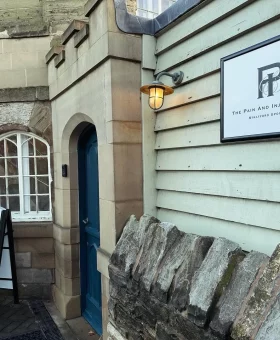Ultrasound Scans
Private Ultrasound Scans in Warwickshire & Birmingham. Painting a Clear Picture; Assisting in an Accurate Diagnosis…
Promoting a Standard of Clinical Excellence in Investigative Private Ultrasound Scans in Birmingham and Warwickshire Areas.
Our Warwickshire and Birmingham Based Musculoskeletal Diagnostic Ultrasound Facilities Are Run by Radiographer and Ultrasonographer (Sonographer), Adrian Burman.
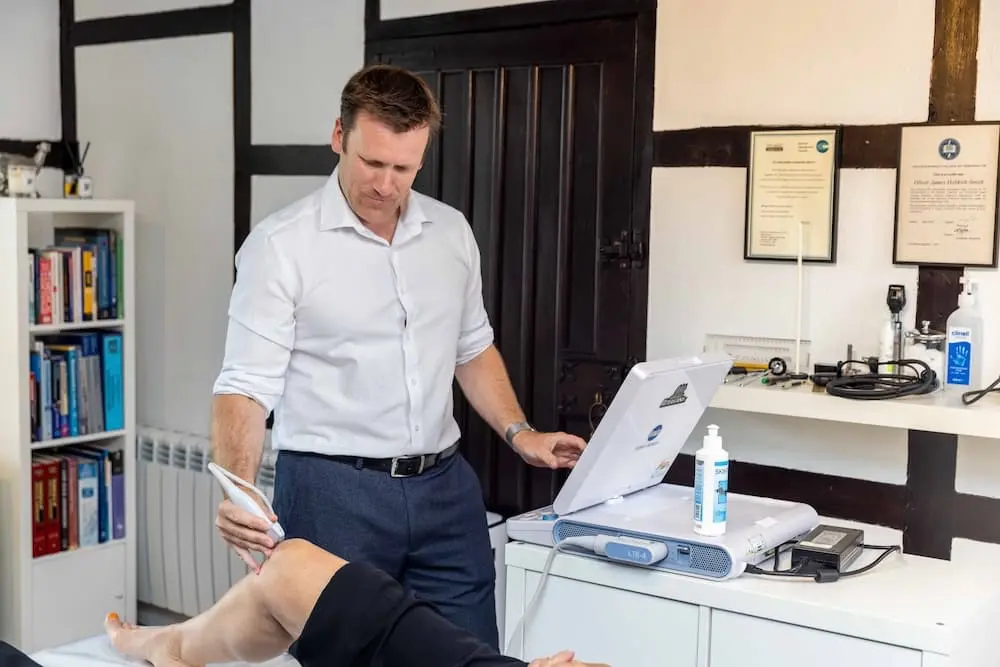
What is a Musculoskeletal Ultrasound Scan in Warwickshire?
Musculoskeletal Ultrasound Imaging is a non-invasive investigative imaging procedure (private ultrasound scan) that helps clinicians diagnose and treat patients suffering with pain and injury.
Ultrasound scans of the musculoskeletal system provide pictures and videos of tendons, ligaments, muscles, nerves, joints etc. throughout the body.
Ultrasound Scans produce pictures of the inside of the body using safe and painless sound waves. Ultrasound imaging, sometimes called ultrasonography, ultrasound scanning, and sonography, is conducted with a small transducer (probe) and ultrasound gel placed directly onto the skin. The probe then transmits high-frequency sound waves through the gel, and into the body. The transducer collects the sounds that bounce back and a computer then organises those sound waves to generate an image.
Unlike X-rays and Computed Tomography (CT) scans, ultrasound scans do not use radiation, and thus there is no exposure to the patient. Ultrasound scans can also be displayed in a video format, demonstrating the movement of the muscles, tendons, ligaments, nerves etc within the body, as well as blood flowing through blood vessels. This dynamic element of an ultrasound scan gives it advantage over other forms of imaging such as Magnetic Resonance Imaging (MRI), CT, and X-ray.
We offer Private Ultrasound Scans in Warwickshire & Birmingham.
Watch Our Diagnostic Ultrasound Video
What is an Ultrasound Scan in Warwickshire Useful for?
- Tendon problems such as a tendinitis or tear within the Rotator Cuff in the shoulder, Achilles Tendon in the ankle and various other tendons throughout the body
- Muscle problems such as tears, masses or fluid collections
- Ligament problems such as sprains, tears or ruptures
- Inflammation and swelling within the soft tissue bursae or joints
- Pinched, trapped, stretched or inflamed nerves, such as seen within Carpal Tunnel Syndrome
- Soft tissue tumours, both Benign and Malignant
- Rheumatoid Arthritis
- Hernia
- Ganglion cysts
- Foreign bodies in the soft tissues (such as splinters or glass)
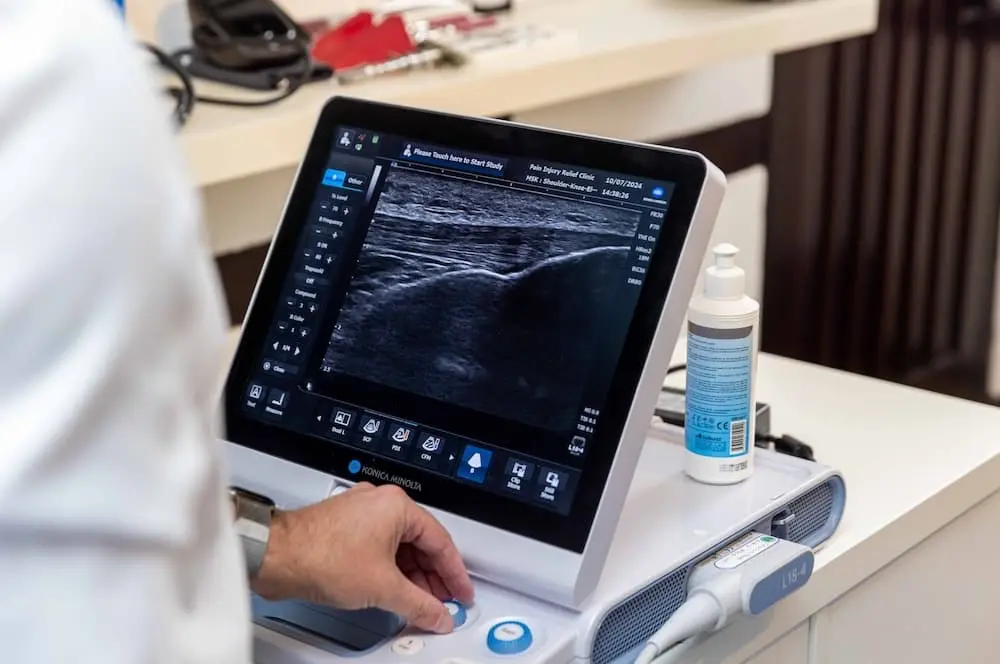
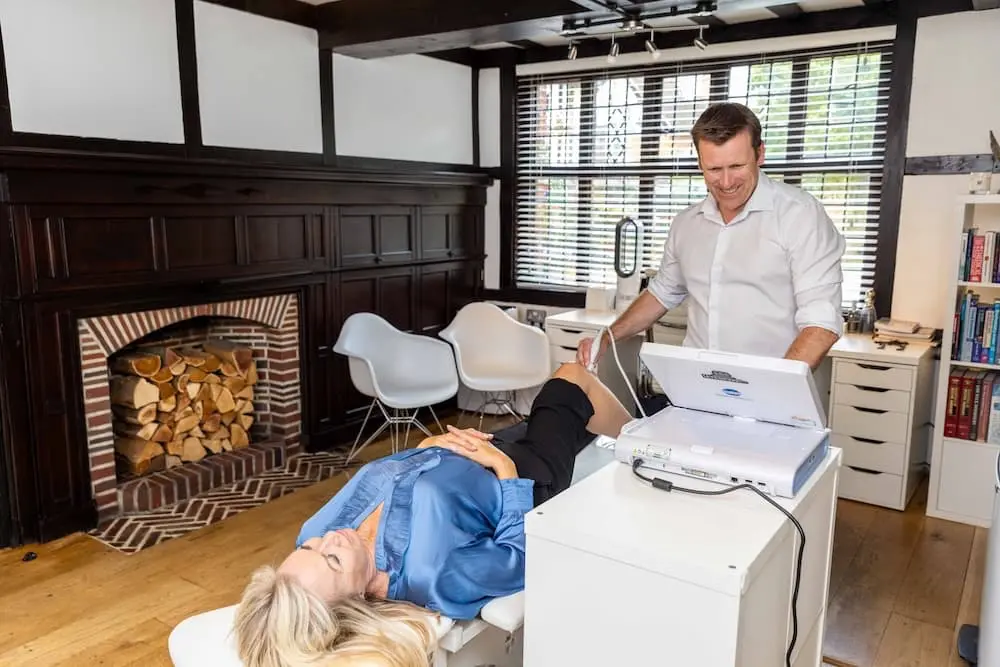
How Should I Prepare for My Ultrasound Scan in Warwickshire?
Most people can dress as they would normally for their ultrasoundscan. However, you may choose to wear comfortable, loose-fitting clothing. The skin overlying the area of your body being investigated needs to be exposed, and you may be asked to wear a gown during the procedure.
We offer Private Ultrasound Scans in Warwickshire & Birmingham.
What Does an Ultrasound Scanner Look Like?
Most ultrasound scanners consist of: a console containing a computer, a video display screen and a transducer (probe) that is used to conduct the scanning. The transducer is a hand-held device, attached to the scanner by a wire. Different transducers (with different functions) may be used during an examination. The transducer emits inaudible, ultrasonic sound waves into the body and then listens out for returning echoes from the various tissues within the area being scanned. The scientific mechanism is very similar to that of sonar used by boats and submarines.
An ultrasound image is visible in real-time on a monitor screen. The image generated is based upon the amplitude (loudness), frequency (pitch) and amount of time it takes for the ultrasound transmission signal to return (bounce back) from the area of the body that is being examined, to the transducer (the handheld device used to examine the patient). The type of body part and composition of the tissue through which the signal travels, will affect the image generated. A small amount of liquid gel is applied to the skin to assist the sound waves in travelling from the transducer to the area of the body being examined, and then back again.
We offer Private Ultrasound Scans in Warwickshire & Birmingham.

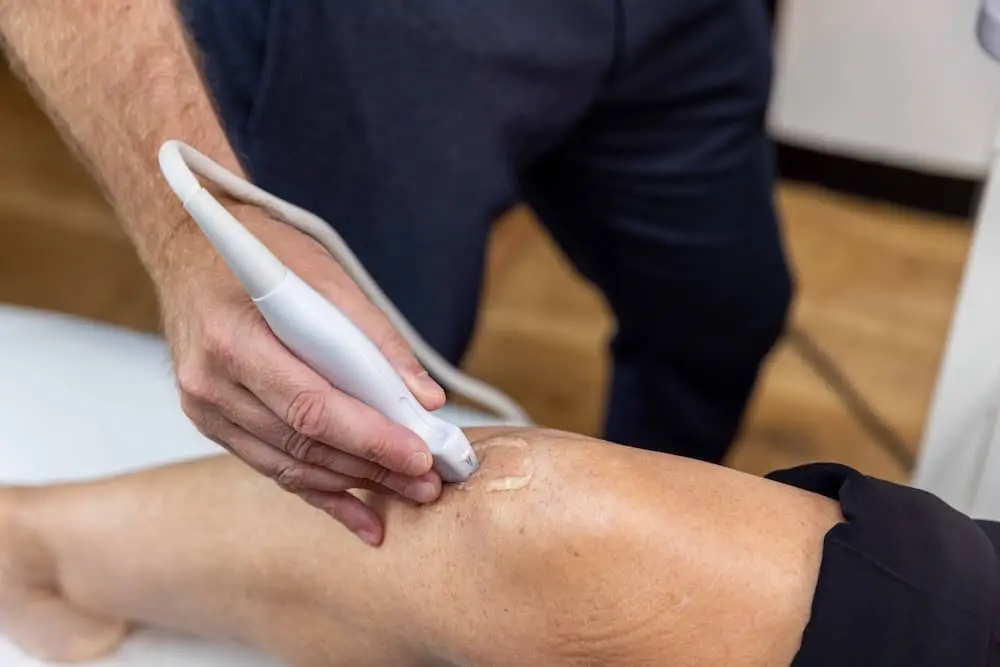
How Does a Private Ultrasound Scan in Warwickshire Work?
A private ultrasound scan works in the same way a sonar used by bats, ships and fishermen. When a sound wave hits an object, it bounces back (or echoes). By measuring the nature of these echo waves, we can determine how far away an object is, together with the object’s shape, size and consistency (solid or filled with fluid).
Can be used to detect changes in appearance, size or contour of organs, body tissues, and blood vessels or to detect abnormal masses, such as tumours.
A transducer both transmits the sound waves, and receives the echoing waves that are sent back. With the transducer pressed against the skin, it emits tiny pulses of inaudible, high-frequency sound waves into the body-part. As the sound waves bounce off tissues, internal organs, and fluids, the specialised microphone within the transducer records any changes to the sound’s pitch or direction. Specific waves are instantly evaluated by a computer, which in-turn creates a real-time video on the monitor. Individual frames of the moving pictures can be captured as still images, and video loops of the images can also be saved.
How is an Ultrasound Scan in Warwickshire Performed?
For most musculoskeletal ultrasound scans / examinations, the patient can be seated on an examination couch or a chair. For other examinations, the patient is asked to lie down; either face-up or face-down on the examination couch. The radiographer / ultrasonographer (sonographer) may ask you to move the body part being examined, or may simply move it for you. This is in order to evaluate the anatomy and function of associated joints, muscles, ligaments or tendons etc.
After you are positioned on the examination table, the radiographer / ultrasonograher (sonographer) will apply a warm water-based gel to the area of the body being studied. The gel will help the transducer make secure contact with the body and eliminate air pockets between the transducer and the skin that can block the sound waves from passing into your body. The transducer is placed on the body and moved back and forth over the area of interest until the desired images are captured.
There is usually no discomfort from pressure as the transducer is pressed against the area being examined. However, if scanning is performed over an area of tenderness, you may feel pressure or minor pain from the transducer.
Once the imaging is complete, the clear ultrasound gel will be wiped off your skin. Any portions that are not wiped off will dry to a powder. The ultrasound gel does not stain or discolour clothing.
We offer Private Ultrasound Scans in Warwickshire & Birmingham.
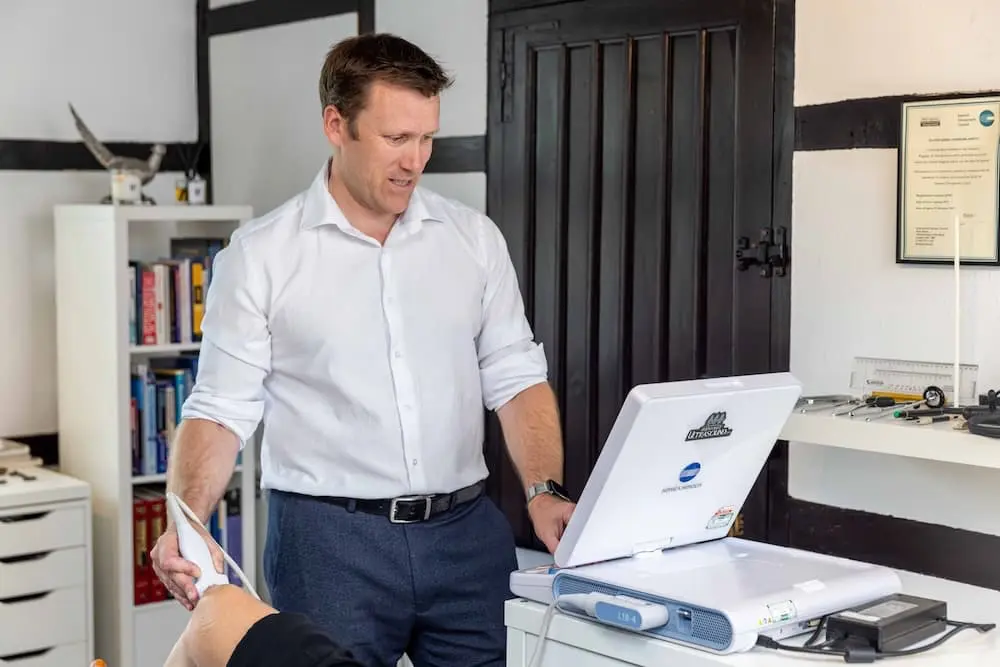
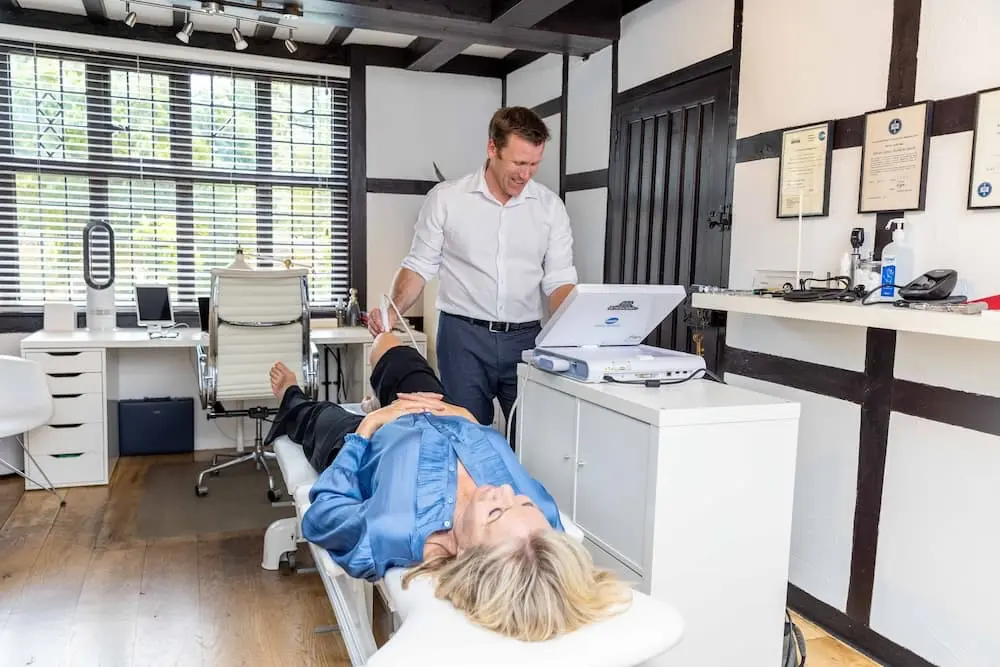
What Will I Experience During and After the Ultrasound Scan in Warwickshire?
Private ultrasound scans are painless and easily tolerated by most patients.
Musculoskeletal ultrasound scans / examination are usually completed within 30 minutes but may occasionally take longer.
Following the ultrasound scan / examination, you may be asked to dress and wait while the images are reviewed.
You should be able to resume your normal activities immediately after your ultrasound scan / examination.
We offer Private Ultrasound Scans in Warwickshire & Birmingham.
What Are the Benefits Vs. Risks of an Ultrasound Scan?
Benefits of a Private Ultrasound Scan
- All of our ultrasound scanning is non-invasive (no needles or injections).
- An ultrasound exam doesn’t tend to hurt at all.
- Ultrasound examination typically costs less than MRI scanning..
- Ultrasound imaging does not use any ionizing radiation (unlike X-rays or CT Scans).
- Ultrasound imaging is an excellent alternative to MRI for patients with claustrophobia.
- Ultrasound imaging is quicker than MRI and does not require the patient to remain completely still. Therefore, for patients with movement disorders, the procedure is typically more successful.
- Ultrasound scanning gives a clear picture of soft tissue (muscle, tendon, ligament, fascia, bursae) that do not show up well on X-ray’s.
- Ultrasound provides real-time and dynamic imaging (video). Most other imaging such as X-ray or MRI typically only provide a static picture. Therefore, ultrasound scanning can show the movement of soft tissue structures such as a tendon, ligament, joint or an extremity..
- For patients fitted with cardiac pacemakers, certain metallic implants, or for those patients whom have metal fragments within their body, MRI scans are typically unsafe due to the strong magnetic field generated by the scanner. However, these same patients can safely receive ultrasound imaging.
- Ultrasound may provide greater internal detail than MRI when assessing soft tissue structures such as tendons and nerves.
Risks of a Private Ultrasound Scan
- For standard diagnostic ultrasound, there are no known harmful effects on humans
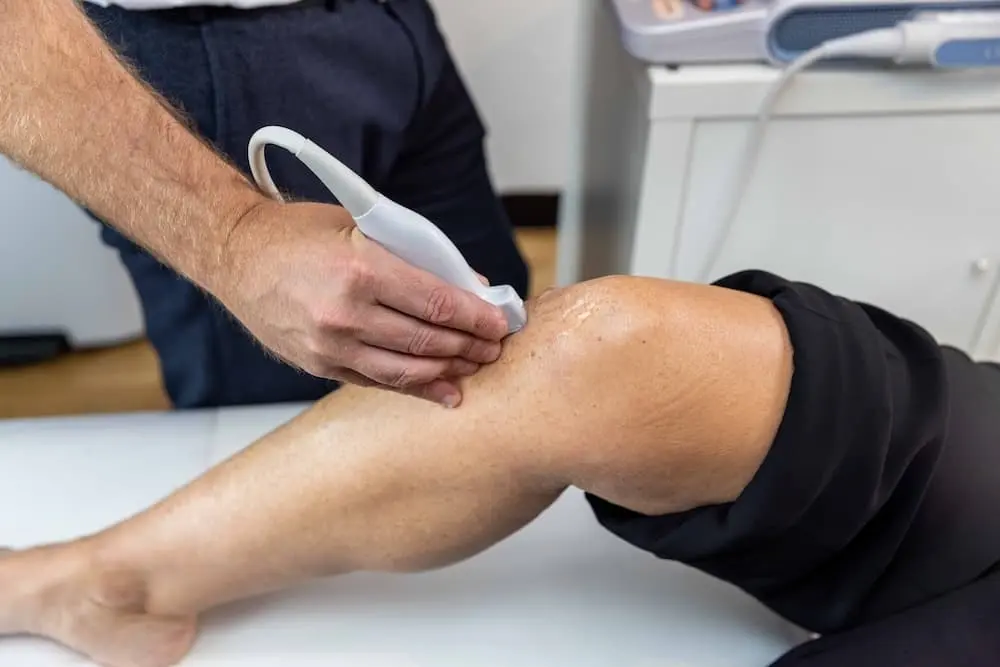
Who Interprets the Results of My Ultrasound Scan in Warwickshire & How Do I Receive Them?
Your radiographer / ultrasonographer (sonographer), Adrian Burman, will personally analyse the images and send a signed report to either yourself, or the clinician who requested the examination. Usually, the referring clinician will share the results with you, however in some cases, Adrian may discuss results with you directly at the conclusion of your examination.
After your examination, further follow-up examination may be necessary, and your clinician will outline the exact reasons why another exam is requested. A follow-up examination may be requested if a potential abnormality needs further evaluation with additional views or a different imaging technique. Follow-up examination may also be requested so that any change in a known abnormality can be monitored over a period of time. This is sometimes the best way to see if treatment is working, or if a finding has stayed the same or changed over time.
We offer Private Ultrasound Scans in Warwickshire & Birmingham.
What Are the Limitations of Private Ultrasound Scans for the Musculoskeletal System?
- Ultrasound waves have difficulty penetrating bone. Therefore scans are only able to display the outer surface of bony structures, not what lies within. To visualise the internal structure of bone or certain joints, other imaging modalities such as MRI and CT are preferable.
- Furthermore, there are also limitations to how deep sound waves can penetrate. Therefore, deeper structures within larger patients may not be seen clearly.
- Ultrasound is not useful in evaluating whiplash associated injuries or most causes of low back pain.




